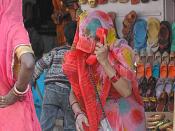In society there are four building blocks of intercultural communication. They are culture, communication, context, and power. Culture can be viewed as patterns of learned beliefs that are shared through generations. It is often considered to be the main concept in intercultural communication, and how we think about culture affects our idea and perceptions. Throughout the world there are many differences between cultures. For example in France, it is customary to greet the shopkeeper before beginning to select items, while in America it is our cultural norm to enter the store, begin to shop, and pay for the items. By thinking about our culture we can broaden our perception to consider different views of culture.
Values are the most felt beliefs shared by any culture. They show what is wanted in their lives, not what is needed. The main belief behind values is that it is a shared perception on society and on ones self.
But that is human nature to have many sides, like the whole "Good" versus "Evil." It is human nature to be one of the three elements. They can be basically a good person. They can be a mixture of good and evil. Or they can be basically evil. This type of thinking is one way of analyzing the thoughts and actions of people. Many people in America hold this belief. In the past years, there has been a shift of views in human nature. Many people are changing their views on the primary evil of humanity.
These values can influence different patterns of communication between people. People who are very individualistic will prefer to have direct contact when communicating. While group oriented people or societies will prefer less direct contact in communication where there is no face-to-face communication going on. Or a collective orientation...


